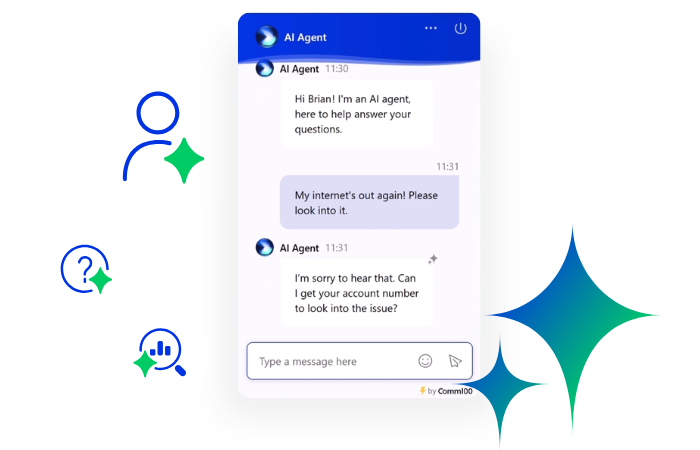The importance of customer service cannot be understated. It is the third highest reason why consumers switch brands, only sitting behind better deals and superior product quality. A positive customer service experience makes 94% of consumers more likely to purchase.
However, although this presents great opportunities to stand out from the crowd, it also poses great challenges. With a higher value placed on customer service comes higher expectations too. In fact, 99% of customers believe that companies need to improve their support offering.
With the development of technology, today’s consumers now expect brands to offer the very best support. They demand speed, convenience, personalization and so much more – all of which the traditional channels, and particularly telephone, can no longer provide alone.
Contact centres are recognizing the restraints of telephone support and incorporating digital channels as they look to digitalize their operations. This blog will cover the key reasons why contact centres are adopting a digital-first strategy to meet their customers’ ever-evolving service expectations, and what this means for the future of contact center solution providers.
What does a digital communication strategy offer that telephone cannot?
1. Channel choice in a digital-first world
In 2021, 48% of organizations diversified the digital channels they support customers on, and the reason behind this is simple. Today’s consumers want to connect with brands where and when it suits them. They want to use the channel that works for them in that moment, whether at home, in the office, or on the go. Providing customers with support only on phone and/or email damages the customer experience (CX) from the outset and creates a barrier to engagement.
In contrast, organizations that use a range of channels give their customers the choice to connect in a way that best suits them, whether that be email, live chat, or social media. It’s important to note, however, to deliver efficient and effective support across all these channels, they must be connected within one platform. This is known as omnichannel customer engagement.
Omnichannel platforms unify every channel into one system, from phone to live chat, so organizations can deliver the same quality of service across every channel. Perhaps even more importantly, because every channel is connected, so too is the information within them so data siloes become a challenge of the past. This can be improved even further by connecting the CRM, bringing front and back-office functions together and ensuring consistency and transparency across teams and throughout the customer lifecycle.
Omnichannel platforms also mean if a customer needs to switch channels, all their information is passed across so agents can seamlessly follow the conversation without losing information or requiring the customer to repeat themselves. This provides consumer-first flexibility that simply can’t be matched by telephone.
2. Speed to meet customers’ expectations
The greatest telephone customer service pain points are getting passed from one representative to another (34%) and having to wait too long to reach a representative (26%). Today’s consumers expect support to be fast and won’t accept long wait times and drawn-out IVR messages. In fact, 90% of consumers rate an immediate response as either “important” or “very important” when they need a customer service question answered.
To satisfy these consumers, organizations are turning in droves to live chat. While consumers are often put on long hold times on the phone, or wait days for a response via email, they receive an immediate and real-time response on live chat. It’s no surprise that with an average wait time of only 36 seconds, live chat boasts a 84% customer satisfaction (CSAT) score. This compares to a 78% benchmark for phone support.
Automation takes this speed to the next level. With an AI chatbot in place, customers receive instant responses at any time of the day. Similarly, voice bots can be integrated into digital voice and telephony channels to communicate with customers via speech, delivering immediate and 24/7 support. And the more questions resolved by the bot, the faster the support for customers who need human help.
With 70% of customers using or interested in using chatbots for simple customer service, it’s no surprise that the market is expected to be worth $13.9bn by 2025.
3. Efficiencies that translate into cost-savings
While the speed of digital channels benefits the end customer by meeting their service expectations, it also benefits the bottom line by improving agent efficiency.
Take live chat, for example. Unlike on the phone, live chat agents can handle multiple chats simultaneously. This is known as chat concurrency and dramatically increases agent productivity because companies can manage the same volume of inquiries with fewer agents. Live chat software also offers many tools that increase efficiency further:
- Canned messages for fast and consistent responses
- Seamless chat routing and transfers to accelerate the customer journey
- Keyboard shortcuts for added speed.
All these efficiencies come together to make live chat a much cheaper alternative to phone. Phone support has been the mainstay customer service channel for decades, but it can be very costly – both in terms of toll charges and person-per-hour costs. Forrester research has shown that live chat customer service is 17-30% cheaper than a phone call.
Automation in the shape of AI chatbots and voice bots increases efficiency even further. Whether responding to typed messages or verbal questions, these bots can manage most inquiries without any human involvement. As a result, the team’s capacity increases without expanding the team size, generating substantial ROI.
4. Personalization that doesn’t step over the mark
Research repeatedly shows how important personalized customer support is to today’s consumers. 76% of consumers now expect personalized services, while 80% of consumers are more likely to make a purchase when offered a personalized experience.
Traditional contact centers severely limit the level of personalization that agents can offer. In contrast, digital channels like live chat give agents a wealth of information about the customer right inside the app. Agents can see where they’re located, their purchase history, previous chats, website pages they have visited and so much more, empowering them to provide customized support every time.
An omnichannel platform that connects each channel together into one system enables even greater personalization as even more data is accessible to the agent thanks to the elimination of channel siloes. By connecting a CRM like Salesforce to the omnichannel platform, you can extend this personalization further with even more data at the agents’ fingertips.
What does this mean for CCaaS providers?
CCaaS providers are restricting their growth and customer base with a telephone-only offering.
While a contact center solution was once enough for many organizations, even the technological laggards are recognizing that it is no longer sufficient. While telephone may still be an important customer service channel, they know that they need to digitalize their operations to meet their customers’ service expectations and reduce costs.
For CCaaS providers, there are two options. The first is to spend great amounts of money and time in building their own digital platform, with a large upfront investment and long time to market. The second option is to partner with a digital omnichannel communication platform like Comm100, integrating their software in weeks and deliver the digital capabilities that their customers are demanding.
Book a chat with Comm100 to learn how you can integrate our digital platform into your software to provide your customers with an omnichannel offering.






